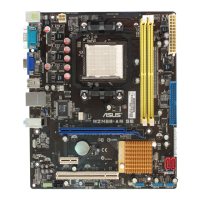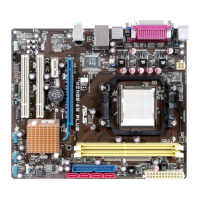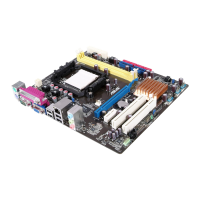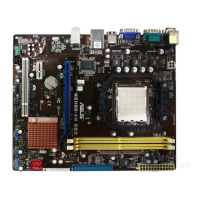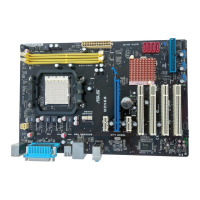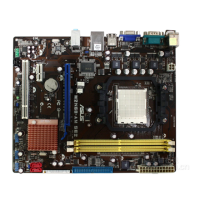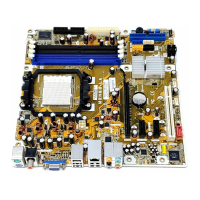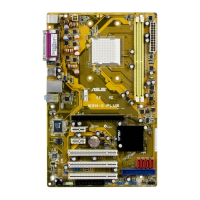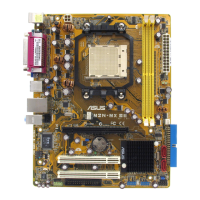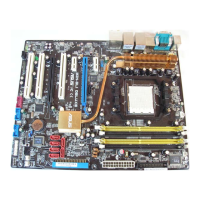4. Line In port (light blue). This port connects to the tape, CD, DVD player, or other
audio sources.
5. Line Out port (lime).
This port connects to a headphone or a speaker. In 4-channel
and 6-channel conguration, the function of this port becomes Front Speaker Out.
6. Microphone port (pink).
This port connects to a microphone.
Refer to the audio conguration table below for the function of the audio ports in 2, 4, or
6-channel conguration.
Audio 2, 4, 6-channel conguration
7. USB 2.0 ports 1 and 2.
These two 4-pin Universal Serial Bus (USB) ports connect to
USB 2.0 devices.
8. USB 2.0 ports 3 and 4.
These two 4-pin Universal Serial Bus (USB) ports connect to
USB 2.0 devices.
9. Video Graphics Adapter (VGA) port.
This 15-pin port is for a VGA monitor or other
VGA-compatible devices.
10. COM port.
This 9-pin COM1 port is for pointing devices or other serial devices.
11. PS/2 Keyboard port. This port is for a PS/2 keyboard.
1.7.2 Internal connectors
1. Serial ATA connectors (7-pin SATA1, SATA2, SATA3, and SATA4)
These connectors are for the Serial ATA signal cables for Serial ATA 3Gb/s hard disk
and optical disk drives. The Serial ATA 3Gb/s is backward compatible with Serial ATA
1.5Gb/s specication. The data transfer rate of the Serial ATA 3Gb/s is faster than the
standard parallel ATA with 133MB/s (Ultra DMA133).
Install the Windows
®
XP Service Pack 1 before using Serial ATA.
Port Headset 2-channel 4-channel 6-channel
Light Blue Line In Rear Speaker Out Rear Speaker Out
Lime Line Out Front Speaker Out Front Speaker Out
Pink Mic In Mic In Bass/Center
Chapter 1: Product introduction1-9

